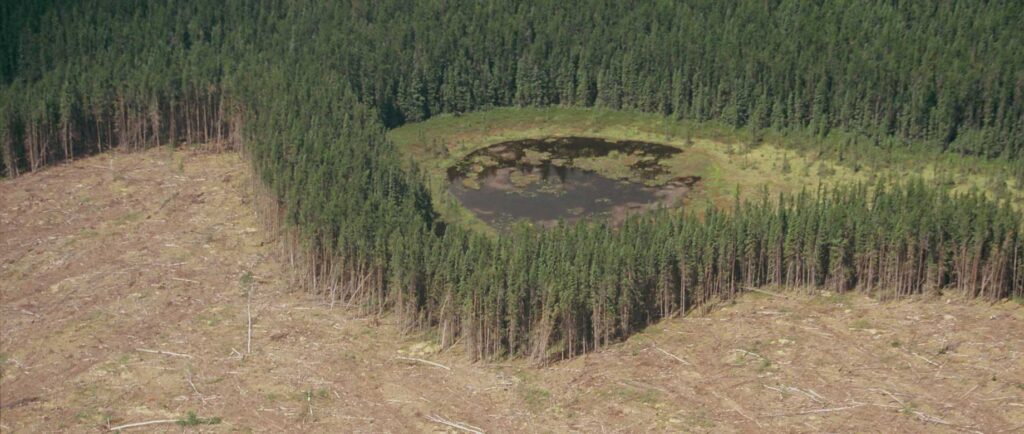It’s not just about good policy, it’s about HOW we build economic prosperity.
In the face of growing environmental challenges, Canada needs strong, modern policies that ensure economic prosperity and environmental protection are mutually reinforcing. The Impact Assessment Act (IAA), although not perfect, was designed to do just that. Impact assessment is a planning tool that provides a clear, transparent process for evaluating the positive and negative environmental, economic, health, and social effects of proposed projects.
As a tool, it ensures the environment and Indigenous rights are protected by outlining what actions are required by a project proponent to reduce or prevent adverse effects. It is not intended to be used to stop a project from being built.
The IAA is coming under renewed scrutiny as pressure to speed up economic development increases. But this would take Canada backwards, not forward. Attracting investment in major projects that create new jobs and new export markets is more important than ever to Canada’s sovereignty. And access to the European market requires that Canada maintain a strong regulatory environment on carbon, which also incorporates rigorous impact assessment.
Learning from the past
History has shown the consequences of weakening environmental oversight. Before the Impact Assessment Act (IAA), Canada’s regulatory framework was fragmented and inefficient. Environmental assessments were handled by multiple federal departments, with no clear legislated timelines. The process focused solely on adverse environmental effects, neglecting to consider both the positive and negative impacts of projects. It relied exclusively on “Western” science, overlooking Indigenous knowledge and alternative sources of evidence. Indigenous rights and interests were largely unrecognized. This lack of consistency and transparency undermined public trust across the board — from industry to environmental groups. Major projects faced significant delays, legal challenges, and widespread opposition due to vague guidelines and insufficient environmental protections.
Dismantling or significantly altering the current impact assessment system would be a step backward — returning to an outdated approach that fails to support long-term sustainability. It would leave industries and communities in uncertainty, damage Canada’s reputation as a responsible resource developer, and jeopardize our ability to strengthen global trade partnerships.
While some industry groups have been lobbying to scrap or weaken the current system, others do not want the federal government to create even more regulatory uncertainty. Government policy can’t keep going back and forth. Canadian businesses need regulatory certainty and a predictable framework to attract investments. It’s just basic economics.
Let’s talk about why the IAA is important and how it can be strengthened, not weakened.
Impact assessment is a planning tool that provides a clear, transparent process for evaluating the positive and negative environmental, economic, health, and social effects of proposed projects.
Economy or Environment: A False Choice
Critics argue that environmental assessments slow down economic development, but the reality is that a strong economy depends on a healthy environment. Industries like forestry, fisheries, and tourism — worth billions to Canada’s GDP — rely on well-managed natural resources. When development proceeds without rigorous assessment, we risk damaging the very areas that sustain jobs, communities, and long-term prosperity that we depend on. We have seen that story play out in numerous communities across Canada.

Photo: Elliston, Newfoundland by Meny Arigur
The IAA enables investment in major projects and ensures responsible development through an open and efficient process. As a planning tool, impact assessment ensures that economic decisions are made with full consideration of both the positive economic, social and environmental benefits of a project, as well as its environmental consequences, establishing the conditions under which projects can proceed while mitigating harms. Rather than slowing development, the system should be hailed as a tool for preventing costly mistakes that harm both businesses and Canadians.
The idea that environmental safeguards are an obstacle to economic growth is outdated. In fact, protecting nature is an economic necessity. Extreme weather, loss of wildlife and plant species, and climate-related disasters are already costing Canadians billions of dollars annually.
The IAA helps Canada make informed decisions that prevent environmental degradation, ensuring that businesses and communities don’t bear the financial burden of poor planning. When projects are developed responsibly, they are more resilient, more sustainable, and more likely to gain public support, creating long-term economic stability.

Photo: Anna’s hummingbird by Markus Thompson
Backgrounder: The Impact Assessment Act in Canada
The Impact Assessment Act (IAA) is a federal law enacted in 2019 that governs how major infrastructure and industrial projects are evaluated for their environmental, social, and economic impacts in Canada. The Act replaced the Canadian Environmental Assessment Act, 2012 to create a more comprehensive and transparent process for assessing projects such as mines, pipelines, and hydroelectric dams.
Key Objectives of the IAA
The Act aims to:
- Ensure early and meaningful public participation in project assessments.
- Strengthen Indigenous engagement and consultation in line with reconciliation efforts.
- Provide clear guidelines for industry and investors to reduce uncertainty.
- Consider scientific, environmental, economic, and social factors when approving projects.
- Support Canada’s commitments to climate change action and biodiversity protection.
How the IAA Works
Under the IAA, major projects undergo a structured impact assessment led by the Impact Assessment Agency of Canada. This process includes:
- Initial Planning Phase – Determines whether an assessment is required.
- Impact Study – Evaluates potential effects on the environment, Indigenous rights, and public health.
- Public and Expert Review – Consultation with scientists, Indigenous groups, and the public.
- Government Decision – Based on findings, the government decides whether a project can proceed and under what conditions.
- Monitoring and Compliance – Approved projects must meet conditions to mitigate negative impacts.
Certainty in Uncertain Times
One of the biggest misconceptions about scrapping or weakening the IAA is that it will lead to faster project approvals. In reality, it will do the opposite. Without clear and consistent guidelines, projects will be left vulnerable to lengthy court challenges, legal uncertainty, and public opposition. These vulnerabilities create the potential for stranded investment which in turn, hurts the overall economy. Industry needs predictability and a fair, transparent process to move forward efficiently. The IAA provides a structured, science-based approach that helps avoid legal roadblocks and ensures projects are developed in a way that benefits both the economy and the environment.
At a time when Canada needs stability, weakening or repealing the IAA would create confusion and unpredictability for businesses, investors, and communities.
Weakening the IAA to give more responsibility to provinces risks creating a fragmented regulatory system where environmental protections vary widely across jurisdictions, leading to inadequate oversight and weaker protections for ecosystems, Indigenous rights, and public health. More broadly, a strong federal framework ensures consistency, accountability, and adherence to international climate commitments, making us a more attractive trading partner. Weakening environmental oversight now would send the wrong signal to investors, increase risks for businesses, and undermine Canada’s ability to manage its natural resources responsibly.

Photo: Wild Killer Whale Watching, Vancouver Island, British Columbia
Strong Environmental Protections Support Trade Expansion: Moving Forward, Not Backward
With growing political tensions and recent tariff impositions from the U.S., Canada is actively seeking new, stable trade partners. The European Union, a key alternative market, has stringent environmental protection requirements as part of its trade agreements. Maintaining the IAA strengthens Canada’s credibility in the global market, ensuring our industries can meet these environmental standards and access new economic opportunities. Weakening environmental protections would not only put our natural resources at risk but could also jeopardize trade relationships with partners who prioritize sustainability, leaving Canada more vulnerable to the volatility of our southern neighbor.
The choice is clear: Canada must continue advancing policies that support both economic growth and environmental responsibility at the same time. The Impact Assessment Act is not a roadblock — it’s a roadmap for sustainable development. Instead of tinkering or dismantling it, we should focus on improving its implementation, ensuring that it remains an effective planning tool for guiding Canada’s future.
Now is not the time to undo progress. Now is the time to strengthen our commitment to responsible development, to protect our natural heritage, and to build a Canada that thrives — both economically and environmentally.
Let’s move forward, not backward.

Sandra Schwartz,
National Executive Director,
CPAWS
Banner Photo: Saskatchewan Delta by Prairie Rising
Nation-Building Isn’t Just About Speed. It’s About Vision.
Nature First: A 100-Day Plan to Secure Canada’s Future
Canada’s nature is worth fighting for
Scrapping the Impact Assessment Act is a Step Backward for Canada




